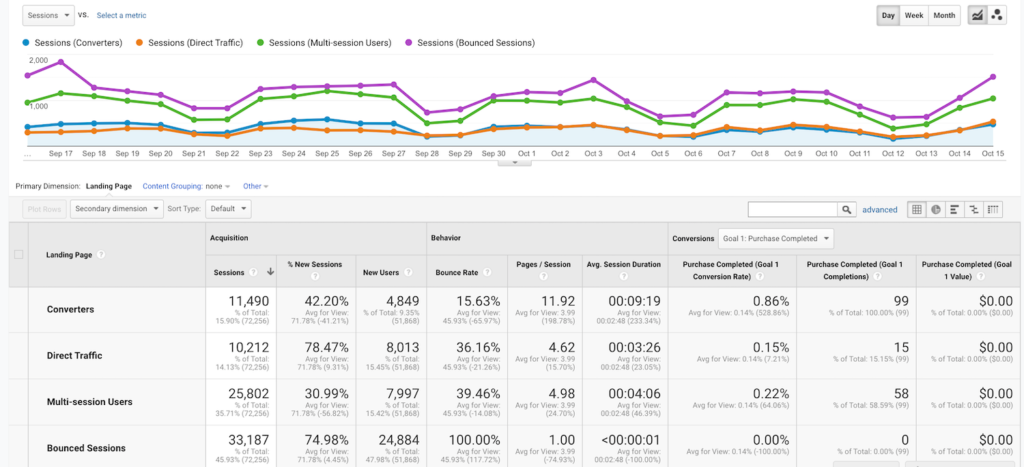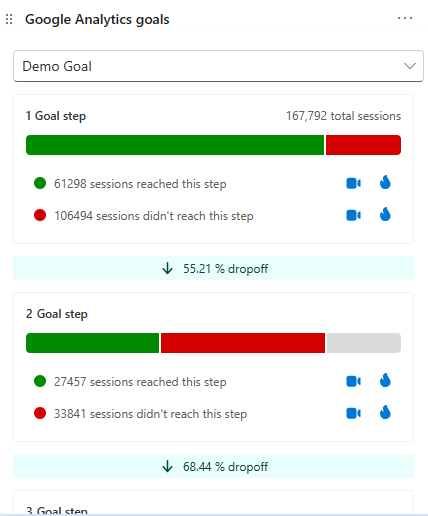Unveiling the Blind Spots: Understanding What Google Analytics Goals Can not Measure
In the realm of digital analytics, Google Analytics stands as a powerful tool for tracking and examining on-line customer communications. However, amidst its robust capacities, there exist unseen areas that often avert measurement. Understanding what Google Analytics objectives can not gauge is vital for gaining a thorough sight of user actions and involvement. As we explore the intricacies of these dead spots, we uncover an intricate internet of undiscovered regions that hold beneficial understandings into customer activities and motivations, difficult conventional wisdom and clarifying the restrictions of our data-driven understanding.
Customer Habits on External Operatings Systems
Recognizing exactly how customers communicate on exterior systems is vital for optimizing online methods. External platforms, such as social media sites networks, recommendation web sites, and on the internet forums, play a considerable function in driving website traffic to a business's website. By examining user habits on these systems, businesses can get valuable insights right into the performance of their marketing initiatives and the choices of their target audience.
One secret facet of user habits on exterior platforms is the recommendation resource. By tracking where the users are coming from, organizations can identify which systems are driving the most traffic to their website. This info can help firms allocate their resources much more successfully, focusing on the systems that produce the very best outcomes.

Offline Interactions and conversions
Evaluating individual behavior on exterior systems supplies valuable understandings right into on-line approaches; however, considering offline conversions and interactions is just as critical for an extensive understanding of a firm's total efficiency. While Google Analytics stands out at tracking on the internet interactions, it falls short in recording the full client trip that frequently includes offline touchpoints. Offline conversions, such as in-store acquisitions or phone queries, play a considerable role in several services' success. Disregarding these communications can cause an altered view of the performance of advertising and marketing projects and overall organization performance.

Acknowledgment Beyond Last Click
When delving right into the realm of electronic advertising analytics, it becomes necessary to look beyond the solitary touchpoint of the last click for an extra comprehensive understanding of attribution. While Google Analytics gives beneficial understandings into customer habits, counting entirely on last-click attribution can be restricting - what data is google analytics goals unable to track. Acknowledgment designs that see this page go past the last click supply a more nuanced view of the customer journey, considering all the touchpoints that bring about a conversion
Acknowledgment beyond the last click enables online marketers to designate credit scores to various communications along the conversion course, providing a clearer image of the performance of different advertising channels. By discovering multi-touch acknowledgment models such as linear, time degeneration, or position-based attribution, services can better assign their marketing spending plans and maximize their methods for maximum impact.
Recognizing the impact of each touchpoint in the conversion process is vital for making educated decisions and taking full advantage of ROI. By welcoming acknowledgment past the last click, services can acquire deeper understandings right into client behavior and customize their advertising initiatives better.
Cross-Device and Cross-Browser Monitoring

Similarly, cross-browser tracking enhances cross-device monitoring by recording customer behavior as they switch between various web browsers. Comprehending how users interact with web sites on numerous web browsers can help marketing professionals maximize their on-line experiences to guarantee uniformity and functionality throughout various systems.
Qualitative Data and Customer Intent
Comprehending user intent through qualitative data evaluation is important for establishing targeted digital advertising methods that resonate with the requirements and preferences of the target audience. Qualitative data provides understandings right into the 'why' behind individual actions, dropping light on motivations, emotions, and preferences that quantitative information alone can not record. By analyzing user feedback, remarks, and interactions, marketing experts can reveal valuable info concerning customer intent, allowing them to customize their messaging, web content, and offerings to much better align with what their target market is looking for.
Qualitative information additionally assists in recognizing the context in which customers engage with a website or app. This contextual understanding enables marketing experts to produce even more appropriate and customized experiences, inevitably driving higher interaction and conversion prices. By diving right into individual intent with qualitative information evaluation, services can gain a deeper understanding of their target market, bring about more reliable marketing strategies that fulfill individuals' requirements and expectations.
Conclusion
In final thought, Google Analytics objectives have constraints in try here measuring individual behavior on exterior platforms, offline conversions, attribution beyond last click, cross-browser and cross-device monitoring, and qualitative data connected to individual intent. what data is google analytics goals unable to track. It is very important for organizations to be knowledgeable about these blind spots in order to supplement their information analysis with various other devices and techniques to obtain a more comprehensive understanding of their target market and boost their general digital advertising and marketing strategies
By examining user behavior on these platforms, organizations can gain useful understandings right into the performance of their advertising and marketing efforts and the preferences of their target audience.
Analyzing individual actions on external platforms offers useful understandings right into on the internet approaches; nonetheless, considering offline conversions and interactions is home similarly essential for an extensive understanding of a business's general performance.In digital advertising analytics, moving beyond last-click attribution to explore cross-device and cross-browser tracking is vital for getting an all natural understanding of customer communications throughout numerous platforms and devices. By evaluating customer feedback, remarks, and interactions, marketing professionals can uncover valuable information about user intent, enabling them to customize their messaging, material, and offerings to better straighten with what their target market is seeking.
By delving into user intent through qualitative data analysis, organizations can gain a deeper understanding of their target audience, leading to a lot more reliable advertising and marketing strategies that satisfy customers' expectations and demands.